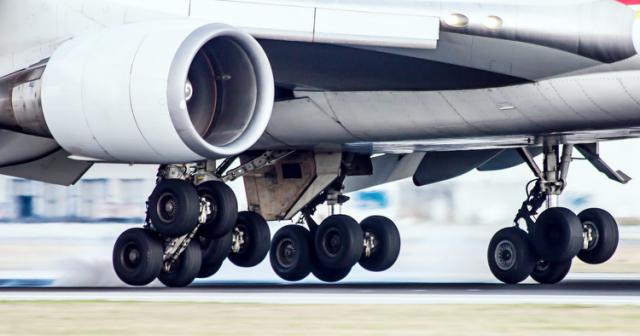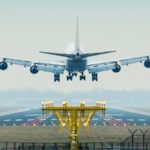
One thing you almost never see when an airplane lands is a blowout. Think about that: Again and again, the tires hit tarmac at 170 miles per hour and bear the weight of a modest office building. And they nail it. Every time.
Aircraft tires are amazing when you think about it. The typical airliner tire can handle a 38-ton load. It can meet the ground 500 times before needing a re-tread, a refresh it can take on seven times in its life.
A Boeing 777 uses 14 tyres, Airbus’ A380 carries 22, and the enormous Antonov An-225 demands 32. The key to their remarkable durability is maximizing the air pressure, says Lee Bartholomew, lead test engineer for Michelin Aircraft Tires. The high-flying rubber is typically inflated to 200 psi, roughly six times what you put in an automobile tire, and the tires on an F-16 fighter are pumped to 320 psi. “It’s really pressurized air that’s so strong,” he says.
The tires themselves aren’t terribly large— a Boeing 737 rides on 27×7.75 R15 rubber. In English, that means it is 27 inches in diameter, 7.75 inches wide, and wrapped around a 15-inch wheel. The sidewalls aren’t terribly thick, and the strength of the tire lies in the cords embedded below the tread, Bartholomew says. They’re typically nylon, and more recently a variety known as aramid. Each layer of the casing contributes to its load bearing and air pressure resisting capabilities. Of course, tires can fail, especially when under-inflated or overloaded. Treads can come off and casings can blow out.
In the first moments after a plane touches down, the tires are skidding, not rolling. The airplane essentially drags them down the runway until their rotational velocity matches the velocity of the plane. That’s why they smoke upon landing, and why Michelin uses grooves instead of the block patterns seen on your car’s rubber—blocks would simply break off. (Most tire wear comes from this moment of contact—where the rubber meets the runway.) The stoutest tires are rated for speeds of up to 288 mph.

To develop a new sort of tire, or test a tweak, Michelin starts with computer simulation, followed by prototyping. Then it tests how the tires do when they’re overloaded or pushed past their speed limit, on simulated takeoffs, landings, and taxiing. Like everything in aviation, tires must meet specific and demanding rules—for example, a tire must withstand four times its rated pressure for at least three seconds.
“It is almost impossible to blow out a tire by over inflating it,” Bartholomew says. “In fact, in cases where tires have been over-inflated, the wheel actually fails before the tyre.”
USA Today






